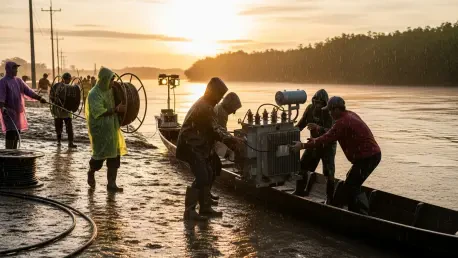When night fell along the mangrove-lined bends of the Gualajo River, the dark once arrived like a physical wall that sealed classrooms, clinics, and small shops from possibility until sunrise. That rhythm changed abruptly when continuous electricity replaced a precarious mix of car batteries, kerosene lamps, and firewood in this remote community near Colombia’s border with Ecuador. As of December 2018, 189 homes and four schools received dependable service, reaching roughly 900 residents in four zones governed by the Gualajo River Community Council. Backed by the Todos Somos PAZcífico Fund, the project cost about COP 2,604 million—around US$774,230—and served as an early proof point for a broader regional plan. With US$91 million in support from the Inter-American Development Bank, the initiative aimed to connect 20,000 new users across Cauca, Nariño, Chocó, and Buenaventura, pairing investment with inclusive local governance.
From Patchwork Power To Reliable Access
Before the switch, power meant improvisation: generators that rattled to life for a few hours, flickering bulbs tethered to batteries, and smoky lamps that strained eyes and budgets alike. Reliability was elusive, and every gallon of fuel had to move by river, raising costs and cutting service short. The Gualajo project inverted that dynamic by placing residents at the center of delivery. Community members ferried transformers, poles, and spools of cable by boat, then helped site equipment to withstand river floods and heavy rain. Afro-descendant, Indigenous, and rural leaders joined participatory dialogues that aligned routing decisions with local land use and cultural practices, trimming conflict and speeding approvals. That approach did more than solve logistics; it built a sense of ownership that increased the odds that maintenance schedules would hold and that tariffs, once set, would be respected.
Moreover, the project fit a wider trend in Latin America’s hard-to-reach areas: when public financing is coupled with grassroots mobilization, electrification both accelerates and endures. In Gualajo, officials treated residents as partners rather than end users, and the results surfaced quickly. Installation crews relied on local knowledge to navigate seasonal changes in river depth, while community councils mapped safe access points, reducing downtime and repair gaps. The mix of targeted subsidies and community oversight also prevented the kind of cost overruns that can derail infrastructure in isolated regions. Crucially, the delivery model showed that social buy-in and engineering rigor are complements, not trade-offs. Once the lights stayed on, the conversation shifted from connection to usage—how to turn electricity into better learning, safer streets, fuller markets, and cleaner homes.
Education, Safety, And Entrepreneurship
In classrooms, the shift to steady power meant tablets and computers could be charged overnight, teachers could plan online, and connectivity brought curricula that once seemed out of reach. Global data underscored the stakes: the United Nations estimated that in 2013 over 188 million children attended schools without electricity, and evidence from Brazil showed that rural schools electrified between 2013 and 2016 saw a 27% drop in dropout rates. In Gualajo, evening study hours opened without the eye-watering smoke of kerosene, and street lighting extended the safe window for travel between villages. Health posts could refrigerate vaccines and operate basic equipment reliable enough for routine care. These changes built a feedback loop; as results improved, families viewed schooling as an investment with a clearer payoff, and local leaders had stronger grounds to negotiate further improvements.
Economically, reliable power lowered barriers that had kept new ventures from taking root. Women launched small refrigeration businesses for fish and fruit, reduced laundry time with efficient appliances, and began offering services—tailoring, phone charging, digital paperwork—that depend on uninterrupted power. Entrepreneurs reported longer productive hours and lower per-unit costs now that fuel purchases declined and maintenance cycles stabilized. Environmental gains compounded the shift: less kerosene burned meant cleaner indoor air and fewer carbon emissions per lumen. A 92-year-old farmer framed the change as overdue dignity—basic service at last—while younger residents described a springboard for opportunity: selling cold goods by day, studying at night, and using connectivity to reach markets beyond the river. The energy transition, in other words, quickly translated into social stability and rising household resilience.
Scaling A Community-First Model
The lessons from Gualajo pointed to a practical blueprint: lock in community participation early, align public financing with local stewardship, and design service models that match geography, not the other way around. Tariff structures that balanced affordability with sustainability were identified as essential, as were training programs for resident technicians to perform routine inspections and report faults before failures cascaded. Data sharing between agencies and community councils was flagged as a low-cost way to track outages, prioritize upgrades, and sequence expansions to adjacent settlements. For fragile river systems, hybrid solutions—small solar arrays augmenting line extensions—were categorized as risk hedges against floods and landslides that could sever single-corridor grids.
Equally important, governance reforms were mapped to keep momentum. Clear service-level agreements set expectations for uptime and response times; procurement templates reduced delays; and social audit committees kept spending transparent. By anchoring expansion in evidence—better education outcomes, safer public space, stronger microenterprise—the case for continued investment moved from promise to performance. The path ahead was not framed as a sprint but as a series of achievable steps: secure funding, codify participation, scale maintenance, and iterate technologies as costs fell. In Gualajo, those steps had already converted an abstract right into a working system, and the same playbook, adapted to local conditions, offered a grounded route to extend reliable, cleaner power across the Pacific Coast.









